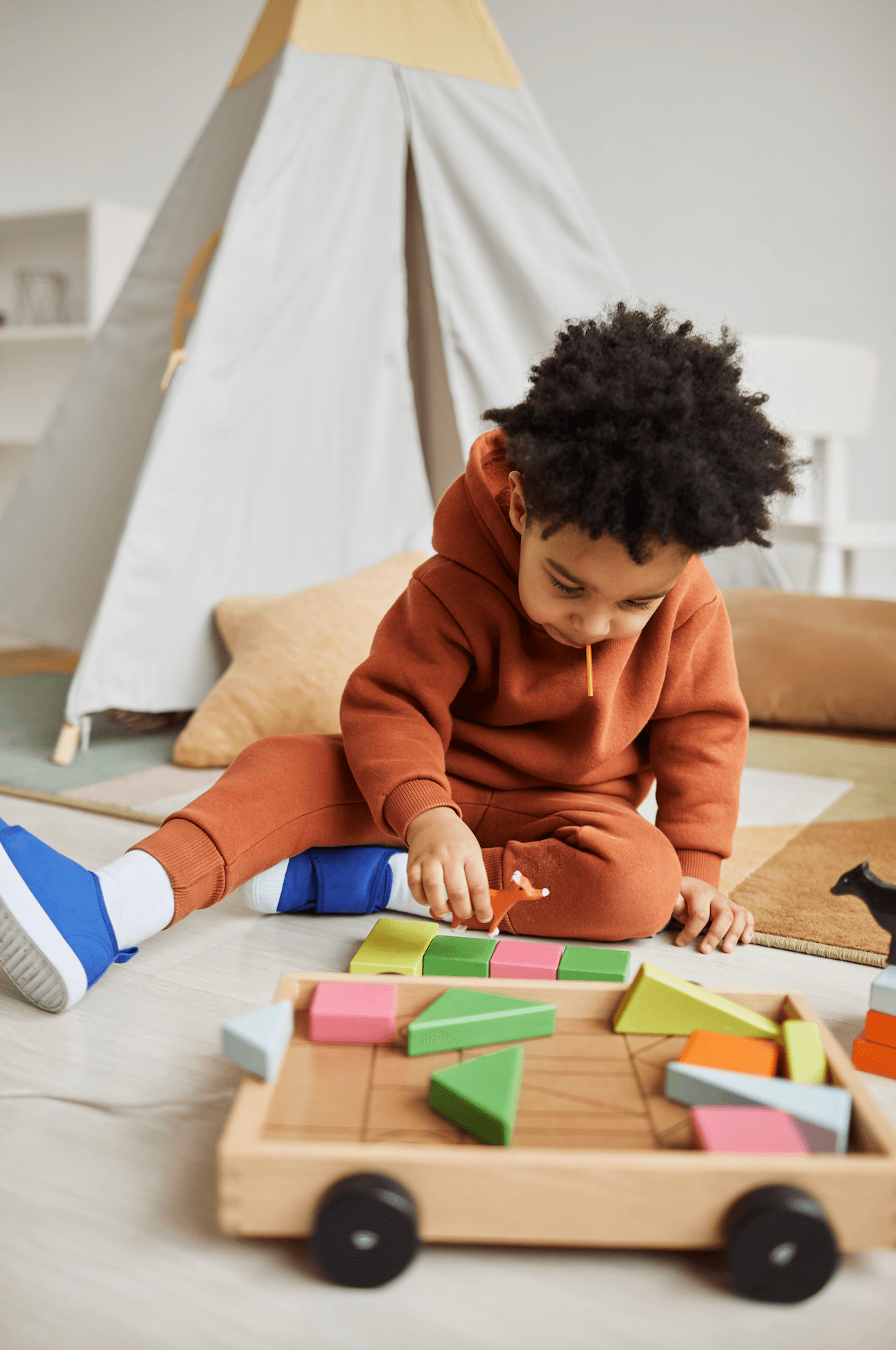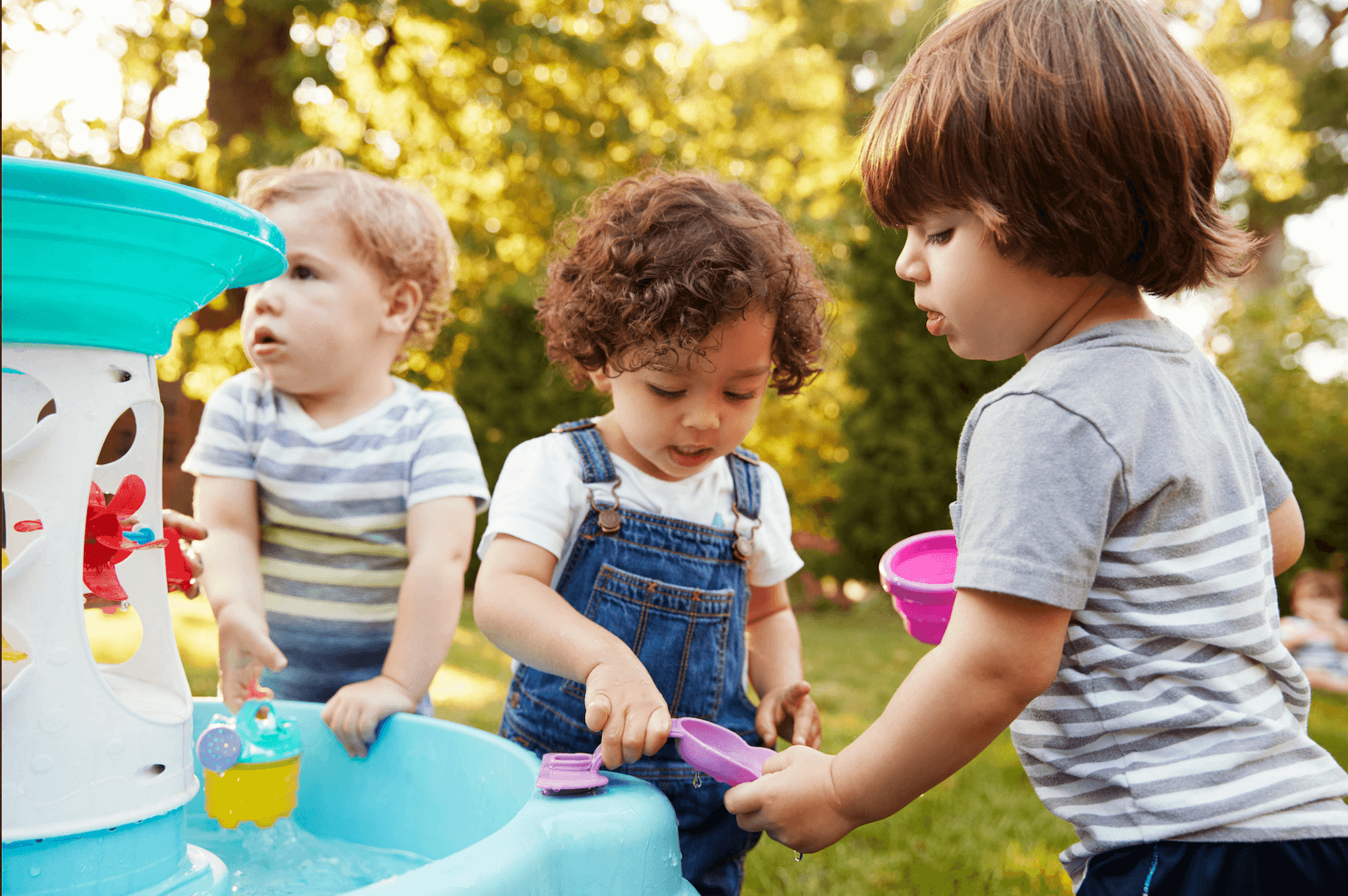Learning to Say Words With M
M is often one of the earliest sounds babies and toddlers will learn to pronounce. You’re likely to hear the M sound during the babbling phase between 6-9 months and you’ll probably hear the M sound in a word or two by 18 months.
M is a great sound to practice with young toddlers because they can easily watch your mouth and try to copy the sound. To make the M sound you bring your lips together, keep your mouth closed, and all the air comes out your nose.
Here’s the thing though, practicing with speech sounds at home with toddlers should be done incognito. Toddlers generally don’t have fun drilling sounds or doing flashcards.
In this blog post, I’m going to show you how to practice the M sound at home when you’re playing with your toddler. We’ll dive into:
Getting Started: The M Sound
First, a hearing check
Having your toddler's hearing checked is a crucial first step for their speech sound development. Clear hearing enables them to accurately perceive and imitate the sounds you say. Sometimes, undetected ear infections or other issues may hinder your child's ability to hear properly. It's important to keep in mind that in some cases, children may be able to hear certain sounds but struggle with others. That's why it's crucial to prioritize getting their hearing checked, even if you don't suspect any difficulties. Double checking your child’s hearing will ensure that all your hard work at home or in speech therapy is maximally effective. You can talk to your child’s pediatrician about scheduling a hearing test.
Now, let’s teach the M sound
If you’re planning to teach the M sound at home, you’ll want to listen for your child to be saying at least a handful of words on their own. For children who haven’t started talking yet, encouraging sounds in general is a better first step.
Use these speech therapy tips to elicit the M sound to your talking toddler:
Make sure your child can see your face
Position yourself in a way that allows your child to clearly see your face. This enables them to observe how your mouth moves to produce the "M" sound. As they watch your lips come together, they can attempt to imitate the sound. Keep in mind, this might mean you have to move around if your little one is on the go.
Make the "M" sound yourself and encourage imitation
For example, demonstrate the "M" sound by saying "Mmmmmmmm," like when enjoying a delicious bite. Repeat this sound at least 10 times during snacks or meals and listen for your child's attempts to imitate you.
Mirror practice
Sit in front of a mirror with your child and practice together (only if your child is interested in practicing this way). They can watch your mouth movements and then observe their own as they try to mimic your actions.
Here are some fun M sounds you might use while you’re practicing:
“Mmmmm” as in yummy or “Yummmm” during play or mealtime
“Moo” with a toy cow or when reading a book
“Ma-ma-ma” (silly repeated babbling sounds in play)
Practice with M words
Once your little one is comfortable making the "M" sound, it's time to practice with some toddler-friendly words. Remember the following tips while practicing speech with your toddler:
Keep it fun:
Ensure that your practice sessions are enjoyable for your child. Avoid creating a drill-like atmosphere or resorting to flashcards. Engage them in playful activities that naturally incorporate the "M" sound. (Here are some examples of how to do this!)
Incorporate everyday activities:
Choose activities that occur daily, allowing you to continue teaching the new sound consistently. This way, your toddler will have regular exposure to the "M" sound and reinforce their learning.
Prolong the sound:
Stretch the "M" sound slightly while pronouncing words. This gives your child more time to observe and replicate the sound accurately.
Select words with familiar sounds:
Opt for words that include sounds your child has already mastered. Learning the "M" sound becomes easier when combined with familiar sounds. Alternatively, focus solely on the "M" sound in words your child frequently uses, even if the pronunciation of the whole word differs slightly from your own.
Word Lists: Words with M to practice at home
In speech therapy, we discuss the position of sounds within words. Here are the different types of words based on the position of the "M" sound:
M Initial Words: These are words where the "M" sound is at the beginning. They are generally the easiest to start with, but remember that every child is unique.
M Medial Words: In these words, the "M" sound is located somewhere in the middle.
M Final Words: These words have the "M" sound as the final sound.
Understanding these categories can help guide your practice and target specific word positions based on your child's needs and abilities.
I’ve put together some words lists for you to pull from that include toddler friendly words to practice with:
M Initial Words
Mama, Mom, Mommy
Milk
Moon
More (may sound like “ma” or “mo”)
Me
My
Monkey
M Medial Words
Yummy
Tummy
Tomato (may sound like “mato”)
Hammer (may sound like “hamm-uh” or “hammo”)
Llama (may sound like “yama” or “ama”)
M Final Words
Yum!
Boom!
Time
Name
Come
Team
Drum (may sound like “bumb” or “bum”)
Two examples of practicing with M words at home:
Your child is a big fan of books! You have the Llama Llama Home with Mama book at home and choose to read this one because it includes tons of M words. Before you start reading, you know you’re engage your little by emphasizing the words "Llama" and "Mama" as you read. Instead of having your child sit in your lap, place the book in your lap while they face you. This way, they can closely observe your mouth movements. You read this book together every day for a week, and your child really enjoys listening to the story (if they don’t like this book, switch it out for another book with repetitive M words). You might notice your child attempting to imitate the word "Mama" a few times. After about a week, they may start remembering some of the repetitive words in the book and even say “Mama” to help tell the story if you pause to let them fill in the blank while reading.
Your child is always on the move, and prefers movement activities versus seated activities. You grab a pot and a wooden spoon from the kitchen for a fun drumming session. Before starting, you find a spot where your child can easily see your face. For example, you can place the pots on the coffee table while your child runs around on the opposite side, always ensuring they have a clear view of you. As you play, focus on repeating the words "Mom," "Me," “More,” and "Boom!" as many times as you can. Feel free to make it even more fun by singing a made-up song or chant while drumming, such as "Boom Boom Mama! Boom Boom Mama!" or any simple and creative jingle you come up with. Let the rhythmic playtime encourage your child to engage with the "M" sound in a playful way. You repeat this activity for 10 minutes each day for a week, because you know it may take several days for your child to attempt to copy one of your M words. Alternatively, you choose a different activity like cars or blocks where you can focus on the same M words for the next day’s activity.
This post contains affiliate links. As an Amazon Associate, Toddler Talk earns from qualifying purchases. Proceeds help support these resources.Books for practicing M words
Toys for practicing M words
My toddler can’t make the M sound. What should I do?
Whether you’ve been practicing at home a bit or you’re concerned for any reason about your child’s ability to pronounce the M sound, it’s a good idea to consult with a pediatric speech language pathologist.
While speech therapists often wait to work on speech sounds until a child is 3 years old, there are some instances when they will work on them earlier. One example is if your child’s speech has characteristics of childhood apraxia of speech, a speech therapist might help them early on.
In general, I’d recommend seeking a speech and language evaluation if your child isn’t making the M sound when babbling or in any words by 18 months (or even sooner if your gut tells you so!). While a speech and language evaluation may be an inconvenience in your schedule (I know it can be a pain to make time for another appointment!), it’s generally a fun time for your child to play and you’ll gain some great insights which can help wash all those unknown worries away. You’ll leave with a plan to support your child’s speech development in a way that’s best for them!
A few more questions answered:
-
Teaching your toddler to say the "M" sound can be done through engaging and interactive activities. Start by ensuring your child can see your face so they can easily watch how you move your mouth to make the M sound. Encourage your child to imitate the sound by saying "Mmmmm" during everyday activities like snack time or playtime. You can also use fun words like "yummy," "moo," or "mama" to practice the "M" sound. Incorporate books, toys, and games that emphasize "M" words, allowing your child to see and hear the sound in different contexts. By making learning playful and enjoyable, you'll support your toddler's progress in mastering the "M" sound.
-
There are several reasons why it might be harder for your child to pronounce “M.” If you practice at home and your child isn’t catching on, or if you are concerned at any point about your child’s pronunciation, be sure to talk to your doctor and consult with a pediatric speech therapist. They can listen to and watch your child make sounds to determine why the M sound is harder for them. Understanding what is making the M sound hard is essential for developing the best plan for teaching your child.
Recently on the blog:
Written By: Stephanie Hatleli, MS CCC-SLP
© 2020-2025. Stephanie Keffer Hatleli, MS CCC-SLP. All Rights Reserved.
The content offered on ToddlerTalk.com is for informational purposes only. Toddler Talk is not engaged in rendering professional advice, whether medical or otherwise, to individual users or their children or families. No content on this site, regardless of date, should ever be used as a substitute for direct medical advice from your doctor, speech language pathologist, or other health professional. By accessing the content on ToddlerTalk.com, you acknowledge and agree that you are accepting the responsibility for your child’s health and well-being. In return for providing you with information related to home speech and language practice, you waive any claims that you or your child may have as a result of utilizing the content on ToddlerTalk.com.
















Explore language tips for potty training tailored to your child's communication stage. From toddlers who are just beginning to talk to children speaking in sentences, learn how to use gestures, sign language, storytelling, and consistency to support your potty training journey.